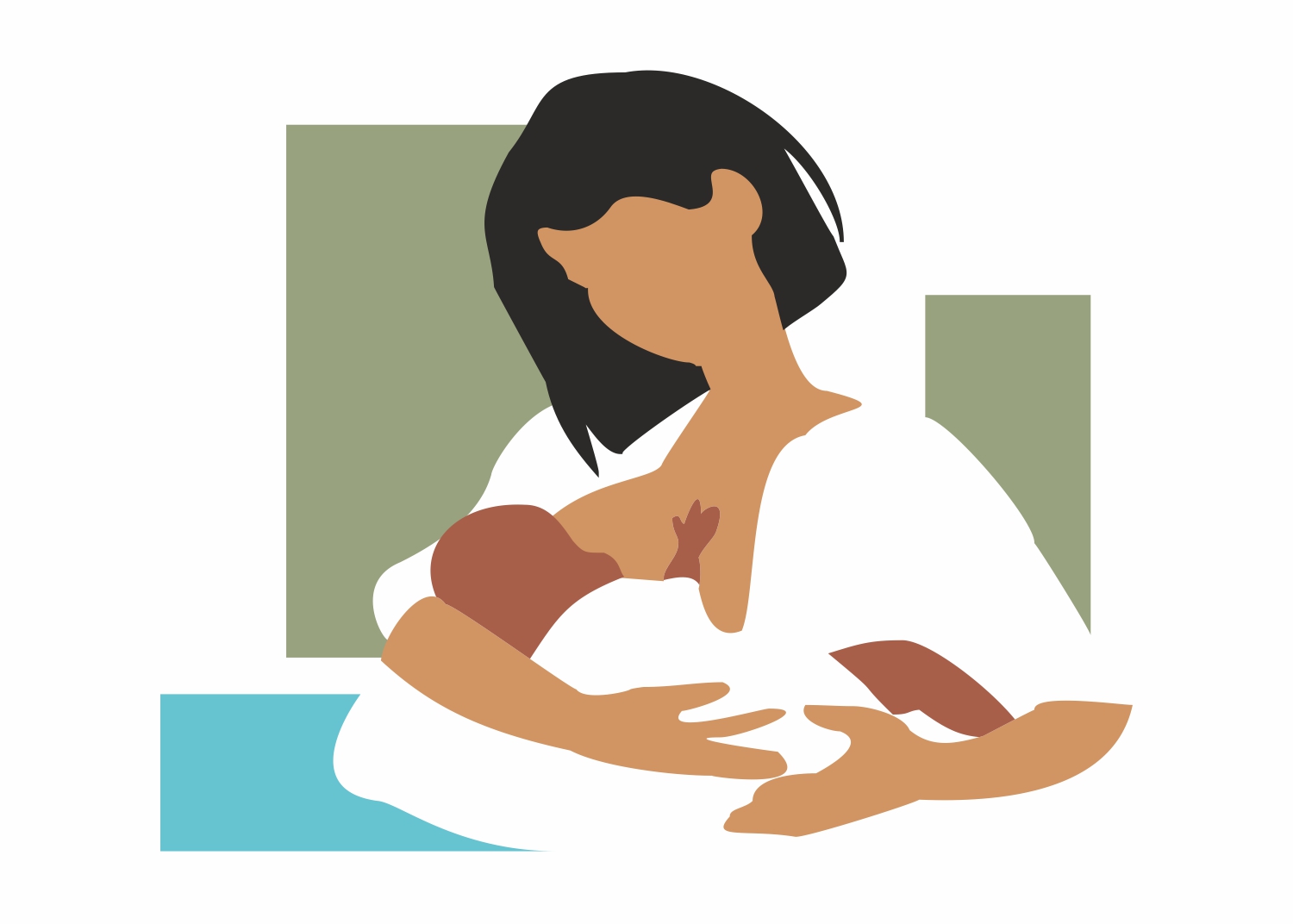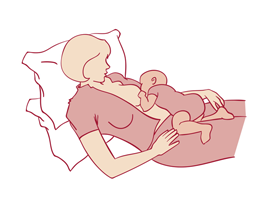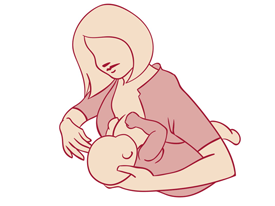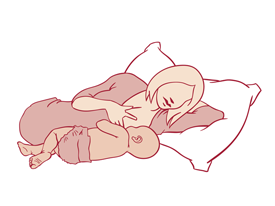You can breastfeed your baby in many different positions. When you have your first baby and breastfeeding is new to you, you may want to try some of the common breastfeeding positions. Then, as you become more confident, you can experiment with other positions. Before you know it you'll find the ones that are the most comfortable and work the best for you and your baby.
You don't have to breastfeed in any particular position. You can breastfeed lying down, sitting up, or even standing. If you like a position that you have never seen or heard of before, that's OK. As long as you and your baby are comfortable, and your baby can latch on and breastfeed well, you can nurse in any position that you choose.

Positioning of breastfeeding
 Laid-back is a fantastic breastfeeding position. It lets you relax while your baby is able to attach easily to your breast. This is very important in the early days when you are both getting used to breastfeeding.
Laid-back is a fantastic breastfeeding position. It lets you relax while your baby is able to attach easily to your breast. This is very important in the early days when you are both getting used to breastfeeding.Laid-back is a great position to try if you are having difficulties with breastfeeding.
Here are a few tips to help you get your technique just right:
- The movement needed to get into this position is from your pelvis. Shift your hips forward in a chair or bed to create a semi-reclined position. Laying your baby down on your semi-reclined body ensures they connect with your body without any gaps.
- Lay your baby on top of you with their tummy down and their cheek resting near your breast.
- Allow your baby to self-attach. They will find the breast and attach themselves. You can also guide or help your baby to attach.
- You can use your arms as guard rails to support your baby on top of your body.
- You can also use pillows and cushions to provide support wherever you need it.
Never fall asleep with your baby on a sofa or armchair as this increases the risk of sudden infant death syndrome (cot death)

- Hold your baby close and facing you. You may find a pillow on your lap helpful to support your baby.
- Gently support your baby’s neck, back and shoulders. This will allow them to tilt their head back easily.
- Do not hold or cover the back of your baby's head. This can result in them pushing back or arching leading to a failed attachment to the breast. It is important to create space for baby to tilt head back without obstruction for a successful attachment.
- Sometimes it helps to shape your breast, making sure your fingers and thumb are well back from the areola. This creates an oblong shape and allows your baby to attach easier to your breast.
- The palm of your other hand can support your baby’s back.

This is a good position if you have had a caesarean birth.
- Support your baby’s neck, back and shoulders with your hand and wrist.
- Let your baby’s back lie along your arm.
- Your baby should be facing you with their nose near the nipple.
- Support your breast with your other hand.
- Guide your nipple towards the baby's mouth.
- Your baby will then snuggle up close and begin to breastfeed.

Side-lying involves lying down. It is good for night feeds.
- You and your baby lie down facing each other.
- Make sure your neck and back are supported and comfortable.
- Your baby's chest should face your chest.
- Take the arm that you're lying on and either place it under your head or use it to support your baby by placing it under their head or around their body.
- You can use a pillow or rolled-up blanket behind your baby's back for support.
- Your baby’s nose will be near the nipple.
- From there, your baby will smell the breast milk, open their mouth wide and find the nipple.
- Make sure your breast is deep in your baby's mouth (ideally at the junction of the hard and soft palate).
Signs that your baby is attached correctly:
- your baby should have a wide mouthful of breast in their mouth
- their chin should be touching your breast
- you may notice their top and bottom lips curled out
- their cheeks should be full and rounded - you should not see the cheeks dimpling when your baby sucks
- their jaw should be moving, you may also see their ears twitch as they feed
- they will start with short quick sucks, then change to long deep sucks with pauses to breathe
- you should hear them swallowing as your breast milk volume increases
- you should not hear smacking or clicking sounds
- they should feed calmly and not move on and off the breast
- your baby finishes feeding and seems satisfied
- you will feel comfortable during a feed and your nipples should not be sore


